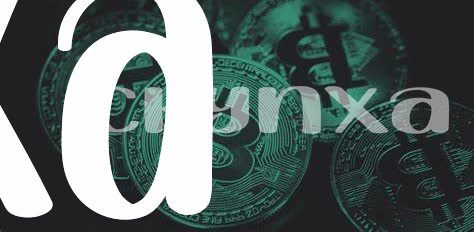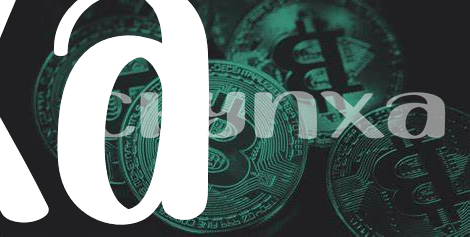The Birth of Bitcoin: Satoshi’s Vision 🌱

Back in 2008, a person (or maybe a group) using the name Satoshi Nakamoto started a revolution without even realizing it. Imagine a world where you can send money to anyone across the globe without having to go through banks or pay hefty fees. That was Satoshi’s dream: a digital currency called Bitcoin that belonged to everyone and no one at the same time. It was like digital gold, something valuable that you could send over the internet.
The real magic happened in January 2009. The first block of Bitcoin, known as the Genesis Block, was mined. This was like the first heartbeat of a new creature in the digital world. It wasn’t just about creating a digital currency; it was about giving power back to the people. This idea of a decentralized financial system was groundbreaking. No single person, company, or government had control. It was all based on a shared public ledger called the blockchain, making it secure and transparent. Table 1 shows a simplified timeline of these early moments in Bitcoin’s history.
| Year | Event |
|---|---|
| 2008 | Publication of Satoshi’s Bitcoin Whitepaper |
| 2009 | Mining of the Genesis Block |
First Transactions: the Pizza Purchase 🍕
In the early days of Bitcoin, a rather unique transaction captivated the attention of the crypto community. Imagine buying two pizzas and instead of paying with cash or a card, you use Bitcoin. Sounds pretty cool, right? Well, that’s exactly what happened. This wasn’t just any purchase; it marked the first real-world transaction using Bitcoin, setting a monumental milestone in its journey. At the time, 10,000 Bitcoins were exchanged for two pizzas – a transaction that’s worth millions today, highlighting Bitcoin’s phenomenal growth. This event not only proved Bitcoin’s potential as a digital currency but also sparked a wave of interest across the globe, drawing enthusiasts and skeptics alike to explore its capabilities. This pizza purchase became a symbol of Bitcoin’s potential and a celebrated moment in its history, showing the world that digital currency could indeed be used in everyday transactions.
Tackling the Speed Bumps: Scaling Challenges 🚧

As Bitcoin grew from its infancy, the pioneering digital currency faced a significant hiccup: it could only process a few transactions per second. Imagine a busy highway suddenly squeezing into a single lane – not great, right? This limitation sparked concerns about Bitcoin’s ability to grow and serve more users without grinding to a frustratingly slow halt. It was like having a super fast sports car but being stuck in traffic.
The community didn’t stand still, though. Bright minds started brainstorming and working on ways to make Bitcoin’s road wider – to increase its capacity so more transactions could zip through without bottlenecking. It’s a bit like city planners finding ways to ease traffic congestion, ensuring everyone can get to their destinations quickly and efficiently, maintaining the smooth flow that’s essential for Bitcoin’s journey ahead. 🛣️⚙️🚀
Enter the Solutions: Lightning Network and Beyond ⚡

As Bitcoin continued to grow, so did its challenges, especially in how fast it could move money around the world. Think of it like a busy highway; the more cars (or transactions) there are, the slower the traffic moves. This is when the tech wizards behind Bitcoin rolled up their sleeves and introduced something akin to a high-speed express lane: the Lightning Network. This clever bit of tech magic works by allowing users to open private channels between each other for sending and receiving money, bypassing the busy highway and significantly speeding things up. But the journey didn’t stop there. Innovators are constantly on the lookout for new ways to make Bitcoin even better, focusing on not just making it faster but also more discreet and secure. For anyone eager to dive deeper and slice through the fog of rumors surrounding Bitcoin, a visit to debunking common bitcoin myths and misconceptions market trends can offer a treasure trove of insights. As we zoom into the future, these advancements promise to sharpen Bitcoin’s edge, ensuring it remains a key player in the digital currency realm and continues to capture the imagination of tech enthusiasts around the globe. 🌐🔍✨
Future Forward: Privacy Enhancements and Upgrades 🔐
As Bitcoin continues to evolve, privacy and security are at the forefront of developers’ minds. Imagine sending a letter that no one but the recipient can open – that’s where Bitcoin is headed. With technology like Taproot offering smarter, more discreet transactions, and other upgrades aiming to obscure transaction details, users enjoy greater privacy than ever before. These enhancements aren’t just about keeping secrets; they’re about empowering users with the choice of how much they wish to share. This commitment to privacy ensures that Bitcoin remains a trusted and versatile digital currency. Moreover, with each upgrade, Bitcoin becomes more robust, preparing it for wider adoption across the globe.
| **Upgrade** | **Description** | **Impact on Privacy** |
|————-|—————————————-|———————————————–|
| Taproot | Makes transactions more efficient and private | Enhances user privacy by making transactions indistinguishable from one another |
| Schnorr Signatures | Improves the scalability and privacy of the blockchain | Allows for more complex transaction types without compromising on privacy |
Global Impact: Bitcoin’s Role in the World Economy 🌍

Bitcoin has grown from a tech enthusiast’s experiment into a cornerstone of the global economy, reshaping how we think about money and transactions across borders. Its decentralized nature means that it operates outside the traditional banking system, opening up financial services to those who were previously excluded due to lack of access or international sanctions. This revolutionary aspect has not only democratized financial services but also sparked debates on sovereignty and financial freedom in today’s interconnected world. As countries grapple with the impacts of international sanctions, Bitcoin offers an alternative pathway for transactions and investments, circumventing traditional financial barriers and fostering a new era of economic inclusivity. For those curious about how these dynamics play out in global markets, impact of international sanctions on bitcoin transactions market trends provides in-depth insights. As we move forward, Bitcoin’s role in the world economy seems poised for expansion, potentially influencing policies and practices in international trade, remittances, and even humanitarian aid, heralding a future where financial empowerment is within everyone’s reach, regardless of geography or socio-economic status.
